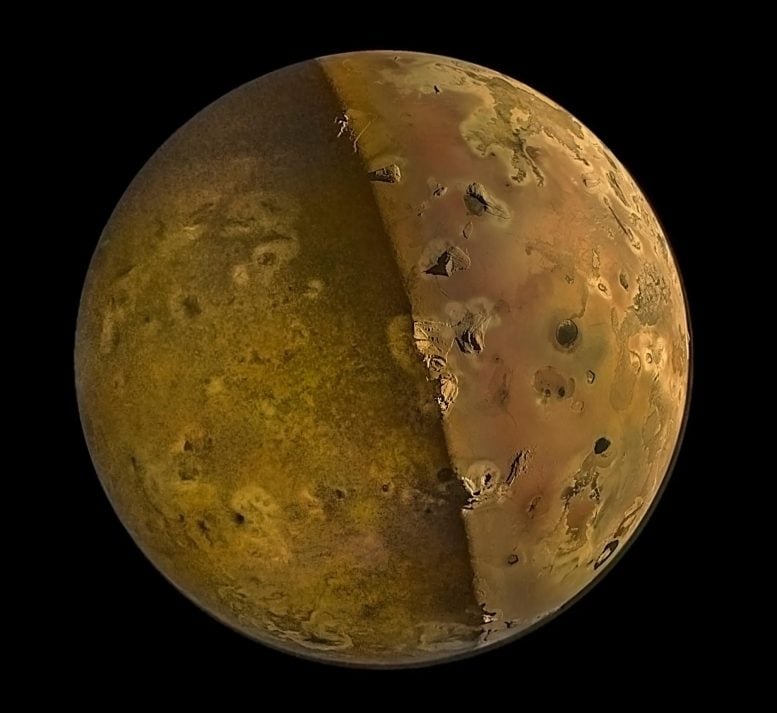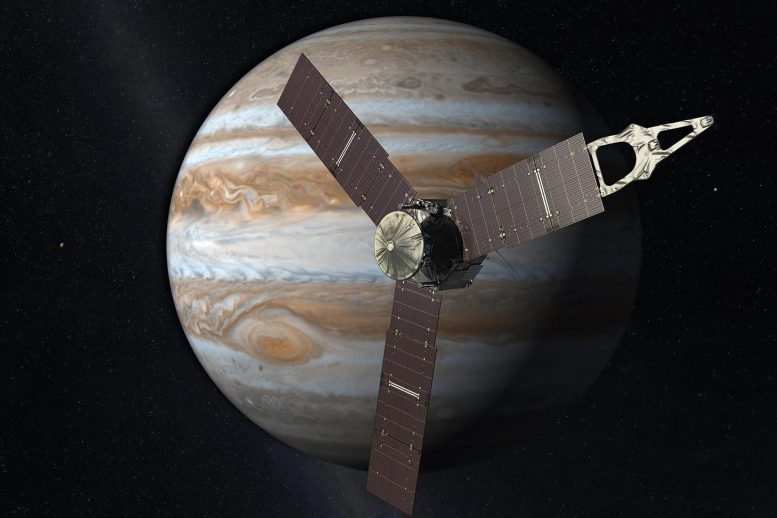
NASA’s Juno spacecraft has conducted the closest flybys of Jupiter’s moon Io in over two decades, capturing detailed images with its JunoCam instrument.
NASA’s Juno spacecraft just made the closest flybys of Jupiter’s moon Io that any spacecraft has carried out in more than 20 years. An instrument on this spacecraft called “JunoCam” returned spectacular, high-resolution images—and raw data are now available for you to process, enhance, and investigate.
On December 30th, 2023, Juno came within about 930 miles (1,500 kilometers) of the surface of the solar system’s most volcanic world. It made a second ultra-close flyby of Io on February 3. The second pass went predominantly over the southern hemisphere of Io, while prior flybys have been over the north. There’s a lot to see in these photos! There’s evidence of an active plume, tall mountain peaks with well-defined shadows, and lava lakes—some with apparent islands.
It will be a challenge to sort all of this out, and the JunoCam scientists need your help. Previous JunoCam volunteers like Gerald Eichstadt have seen their processed images appear in multiple scientific publications and press releases.
You can find the new raw images, see the creations of other image processors, and submit your own work at: https://www.missionjuno.swri.edu/junocam/processing.

NASA’s Juno Mission
The Juno mission, launched by NASA on August 5, 2011, is a pioneering space exploration project aimed at understanding Jupiter, the largest planet in our solar system. Juno’s primary objectives include investigating Jupiter’s atmosphere, magnetic environment, weather patterns, and structure to gain insights into its formation and evolution.
The spacecraft, equipped with a suite of scientific instruments, entered Jupiter’s orbit on July 4, 2016, following a five-year journey through space. One of its notable instruments, JunoCam, provides detailed imagery of Jupiter’s clouds and storms, offering unprecedented views of the planet’s atmosphere.
Juno’s mission highlights the importance of studying gas giants in understanding the solar system’s history and the formation of planetary systems elsewhere in the universe. By closely examining Jupiter’s composition, gravity field, magnetic field, and polar magnetosphere, Juno contributes significantly to our knowledge of the fundamental processes that shaped the early solar system.

Jupiter’s Moon Io
Io is one of Jupiter’s largest moons and the fourth-largest moon in our solar system. It is most renowned for its extreme volcanic activity, making it the most volcanically active body in the solar system.
Discovered by Galileo Galilei in 1610, Io plays a crucial role in our understanding of volcanic processes on other worlds. Its surface is dotted with hundreds of volcanoes, some of which eject plumes of sulfur and sulfur dioxide up to 500 kilometers (about 300 miles) into space. This intense volcanic activity is primarily due to the tidal heating caused by its gravitational interaction with Jupiter and the other Galilean moons, Europa and Ganymede.
Io’s orbit, nestled within Jupiter’s powerful magnetic field, also subjects it to immense tidal forces that flex and heat its interior, fueling its continuous volcanic eruptions. These geological features create a dynamic and ever-changing landscape, with lakes of molten lava, vast lava flows, and towering volcanic plumes, offering a unique laboratory for studying extraterrestrial volcanism.
2 Comments
Xdd
Stunning pictures of lo Jupiter’s moon but, there’s no pictures at all. Stop fooling and making people waist their time…
Thanks!!!